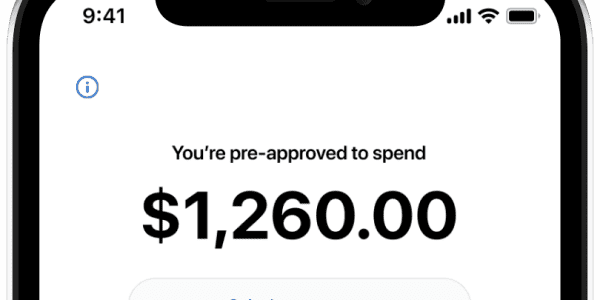A plethora of empty space already outfitted with kitchen appliances and a chance to take advantage of historically low rents is driving restaurateurs to sign fresh leases across New York City.
Food and beverage tenants were the most active in signing retail deals across Manhattan during the second quarter ended June 30, according to commercial real estate services firm CBRE. Some, like Flex Mussels, are staging a comeback after last year's indoor dining restrictions decimated the industry. The seafood establishment is moving one block over from its pre-pandemic home on the Upper East Side to take over a roughly 4,500-square-foot, two-story space that was vacated by a Turkish restaurant in 2020.
Industry tracker Datassential found that more than a 10th of U.S. restaurants — or roughly 80,000 locations out of about 779,000 eateries — have closed permanently since March 2020.
Other businesses view the carnage as an opportunity to enter the market for the first time. Mezeh Mediterranean Grill, an Annapolis, Maryland-based chain serving Greek-inspired dishes, just signed its first lease in Manhattan.
La Casa Del Mofongo, a Latin restaurant and nightclub, signed a 10-year deal on a 15,000-square-foot space close to Herald Square, CBRE said. It was the biggest food-and-beverage deal by size for the quarter. The salad chain Sweetgreen and burger joint Shake Shack also announced new outposts. The former is gearing up for its IPO to fuel its expansion plans, while the latter plans to open as many as 40 new U.S. restaurants this year.
Across Manhattan, restaurant chains signed 23 deals during the second quarter, totaling 83,333 square feet of space, CBRE found. Apparel businesses were the second-most active group with 10 leases, totaling 49,236 square feet. They were followed by health-care operators and jewelers, at two deals apiece.
"The density inside of our neighborhoods is still very, very strong," said David LaPierre, vice chairman of CBRE's global retail services team. "Restaurants are busy right now. Super busy. And so a lot of that deal-making is a bit opportunistic because ... people are thinking more about the long-term comeback."
A flurry of restaurant deals offers encouragement, as Manhattan's retail real estate market is still reeling. The Covid health crisis turned one of the world's most bustling cities for retail into a ghost town.
Leasing velocity has now decelerated for eight consecutive quarters, according to CBRE's tracking of 16 major retail corridors in Manhattan. The number of direct, ground-floor availabilities increased to 290 during the second quarter, from 275 locations in the prior period. This marks a record-high availability of retail space, CBRE said.
Average asking retail rents fell 10.7% year over year to $615 per square foot, marking the 15th consecutive quarterly drop. CBRE noted that current rent rates are at the lowest levels in nearly a decade.
Landlords, in turn, are employing a variety of tactics to sweeten the pot in a bid to fill bare storefronts. Concessions including generous tenant improvement allowances, free rent periods and percentage-rent deals are "major talking points" in the Manhattan retail market today, according to CBRE's brokers and analysts.
Rents along Spring Street in SoHo dropped 22.9% during the second quarter to $487 per square foot, marking the biggest year-over-year decrease of the 16 corridors. In Times Square — hurt badly by a lack of tourists — rents dropped 22.5% to $1,277, a low CBRE has not seen since 2011.
Around Grand Central, a corridor frequented pre-pandemic by office commuters, rents fell 10.4% to $675 per square foot.
The dynamic should improve as people return to offices and international tourism rebounds, said Jason Pruger, an executive managing director at the real estate firm Newmark. Some of the recent deals he's tracked are from businesses with a preexisting presence in the city — including restaurants — that see the available space as a chance to easily expand without having to do much construction work.
"Manhattan is comprised of three things: The people that live here, the people that come here that are tourists, and the office population coming in from the suburbs," said Pruger, who works in Newmark's midtown office. "In order for Manhattan to be Manhattan, all three have to click."
The SoHo neighborhood did see the most new deals during the quarter, as depressed rents and returning shoppers attracted a variety of retail tenants.
CBRE tracked 13 deals across SoHo during the second quarter, taking 47,332 square feet of commercial space. One of them was by the British fine jewelry brand Vashi, which signed its first-ever lease in the United States.
Two deals in the Plaza District along Fifth Avenue, which runs from 49th Street to 59th Street, totaled a whopping 31,622 square feet. The Spanish fashion brand Mango is taking over Ralph Lauren's former 28,000-square-foot flagship location along the iconic strip of high-end brands.
"There's a continued downward pressure, still, on rents," LaPierre said. "That varies market to market."
"When do we hit that leveling off?" he added. "Greater office occupancy. More day-time population. More tourism. ... When we start seeing that, that line probably starts flattening out a bit more, and at some point increasing again."
—CNBC's Amelia Lucas contributed to this report.







